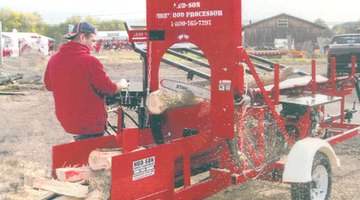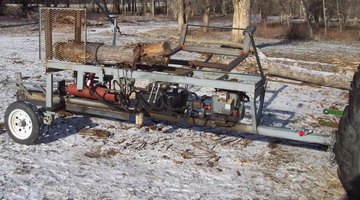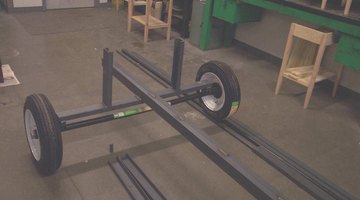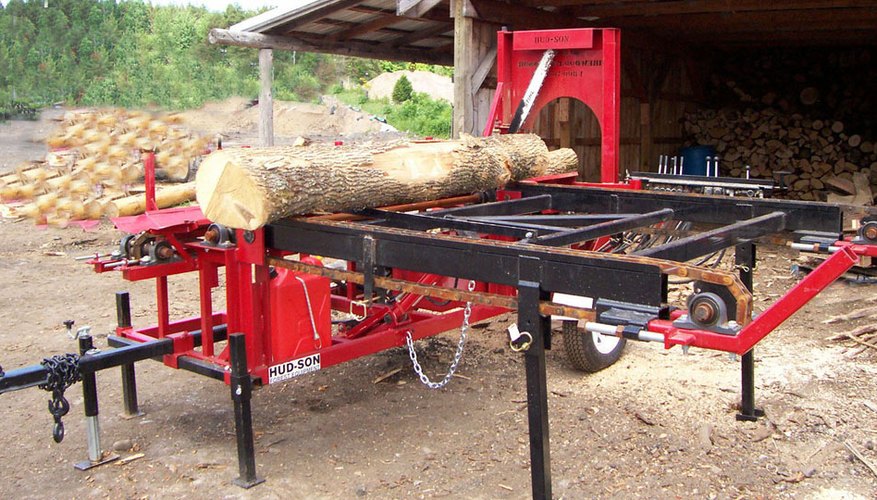Firewood processors are essential tools for cutting and splitting large volumes of firewood efficiently and safely. Unfortunately, these machines are expensive, ranging from £6,500 for a basic model to as much as £32,500 for the larger units used by professional firewood companies.
- Firewood processors are essential tools for cutting and splitting large volumes of firewood efficiently and safely.
- Unfortunately, these machines are expensive, ranging from £6,500 for a basic model to as much as £32,500 for the larger units used by professional firewood companies.
For around £1,625, however, a homeowner can construct his own trailer firewood processor, and enjoy the benefits (and perhaps the profits as well) of producing firewood.
Draw or purchase plans for how to build the firewood processor. Purchase commercially available plans (see Resources) or design your own wood processor based on basic models sold through nationwide dealers such as Blockbuster, Inc. or Hud-Son, Inc. (see Resources).

Choose the key equipment that will power your processor. Wood processors consist of a log cutter (typically a long-blade chainsaw welded in place to the frame) and a log splitter. In a standard set-up, the log is lifted onto the upper frame and pushed against a steel stop that sets the length at 22", the common firewood dimension.
The log is sawn to length, and a hydraulic ram pushes the sawn portion against a steel plate with a sharpened edge, which splits the log in half. An operator rotates the split half and resets it for another pass against the splitter, which yields log quarters suitable for firewood. The most common log splitters are electric or hydraulic, and should be capable of splitting logs into 4, 6, or 8 segments.
- The log is sawn to length, and a hydraulic ram pushes the sawn portion against a steel plate with a sharpened edge, which splits the log in half.
- An operator rotates the split half and resets it for another pass against the splitter, which yields log quarters suitable for firewood.
A hydraulic lift is useful in lifting logs onto a steel deck for processing, although a large tractor or backhoe can also perform this function. Commercial plans include a homemade splitters that can be constructed using hydraulic components.

Construct the trailer, using channel iron to form the central chassis and axles. Attach the wheels and check alignment (axle and wheels square to frame). On top of the axle frame, use channel iron to construct a box frame with cross pieces on top of the chassis.

Use the steel mesh to construct vertical guards around the splitting and cutting areas. Bolt the chain saw onto a welded frame with a pivot attachment that allows it to be raised and lowered. Weld steel stops in place to set the 22" firewood depth. Construct (or purchase) a hydraulic mechanism to push the cut log section against the splitter plate. Weld angle iron or flat steel sections to the frame as bracing to stiffen the construction.
- Use the steel mesh to construct vertical guards around the splitting and cutting areas.
Test the firewood processor by running various size logs through the device. Depending on the size of the frame constructed, home-built firewood processors can typically handle up to 20" diameter logs, and, with a skilled operator, can produce 2 to 3 cords per hour of 22" long firewood.
TIP
Use steel components; weld all parts Buy quality cutting and splitting tools for long service
WARNING
Use steel mesh around cutting and splitting operations. Install steel side rails to keep logs from rolling off deck.
